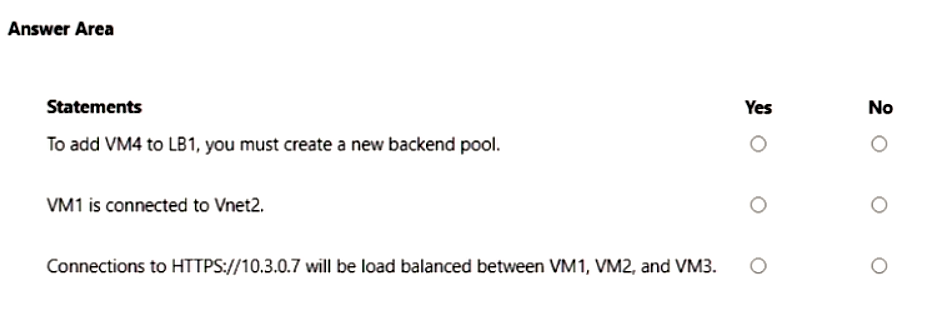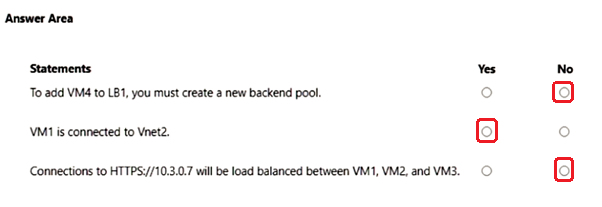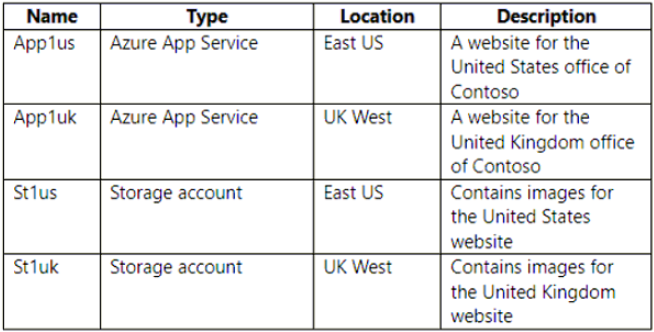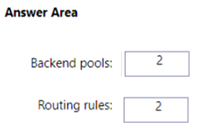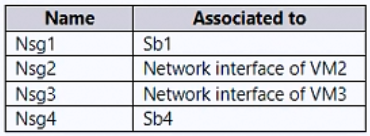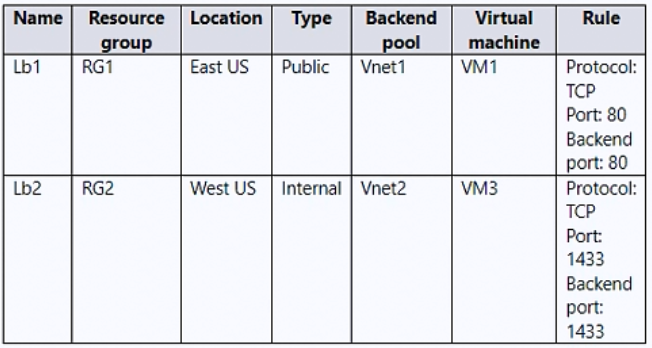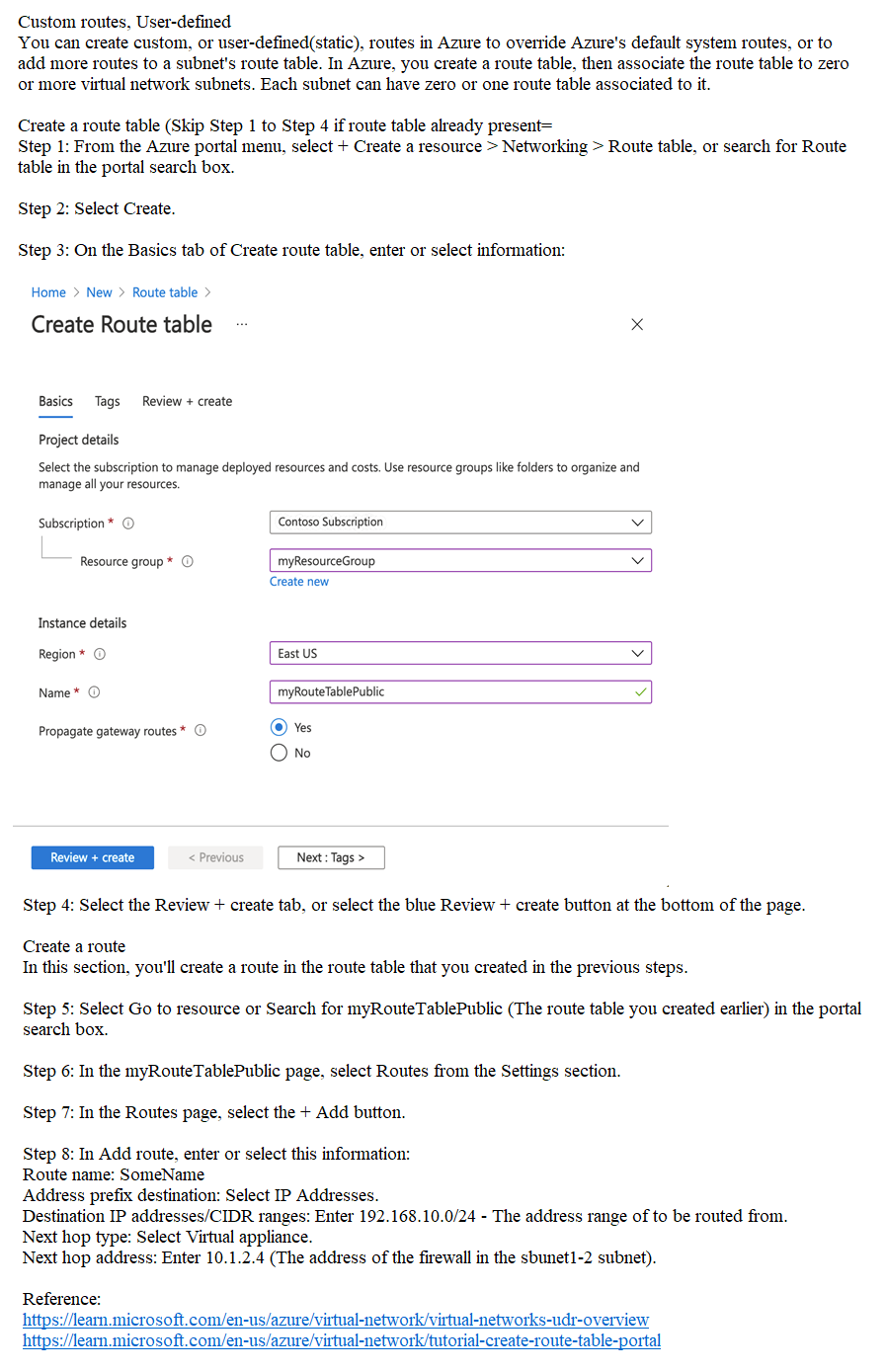You have an Azure subscription that contains the following resources:
• A virtual network named Vnet1
• Two subnets named subnet1 and AzureFirewallSubnet
• A public Azure Firewall named FW1
• A route table named RT1 that is associated to Subnet1
• A rule routing of 0.0.0.0/0 to FW1 in RT1
After deploying 10 servers that run Windows Server to Subnet1, you discover that none of the virtual machines were activated.
You need to ensure that the virtual machines can be activated.
What should you do?
A. On FW1, create an outbound service tag rule for AzureCloud.
B. Add an internet route to RT1 for the Azure Key Management Service (KMS).
C. On FW1, configure a DNAT rule for port 1688.
D. Deploy an Azure Standard Load Balancer that has an outbound NAT rule.
Your company has 40 branch offices that are linked by using a Software-Defined Wide Area Network (SD-WAN). The SD-WAN uses BGP.
You have an Azure subscription that contains 20 virtual networks configured as a hub and spoke topology. The topology contains a hub virtual network named Vnet1.
The virtual networks connect to the SD-WAN by using a network virtual appliance (NVA) in Vnet1.
You need to ensure that BGP route advertisements will propagate between the virtual networks and the SD-WAN. The solution must minimize administrative effort.
What should you implement?
A. An Azure VPN Gateway that has BGP enabled
B. a NAT gateway
C. Azure Traffic Manager
D. Azure Route Server


